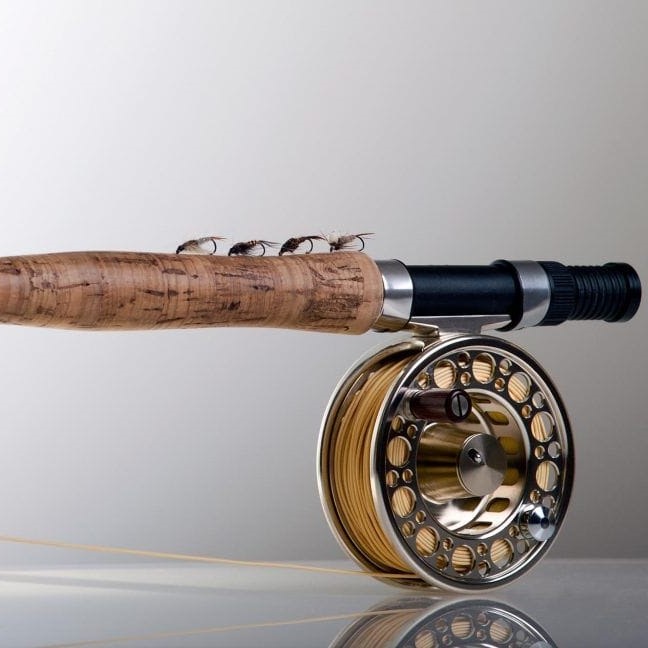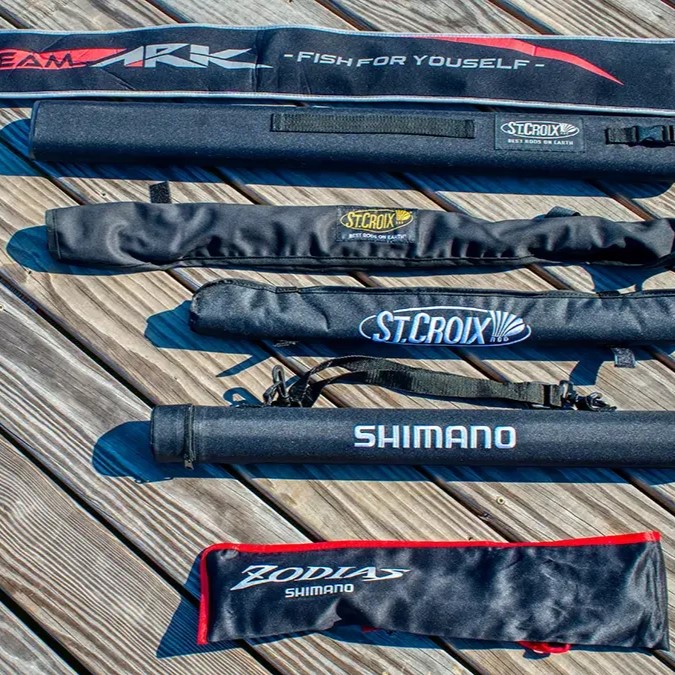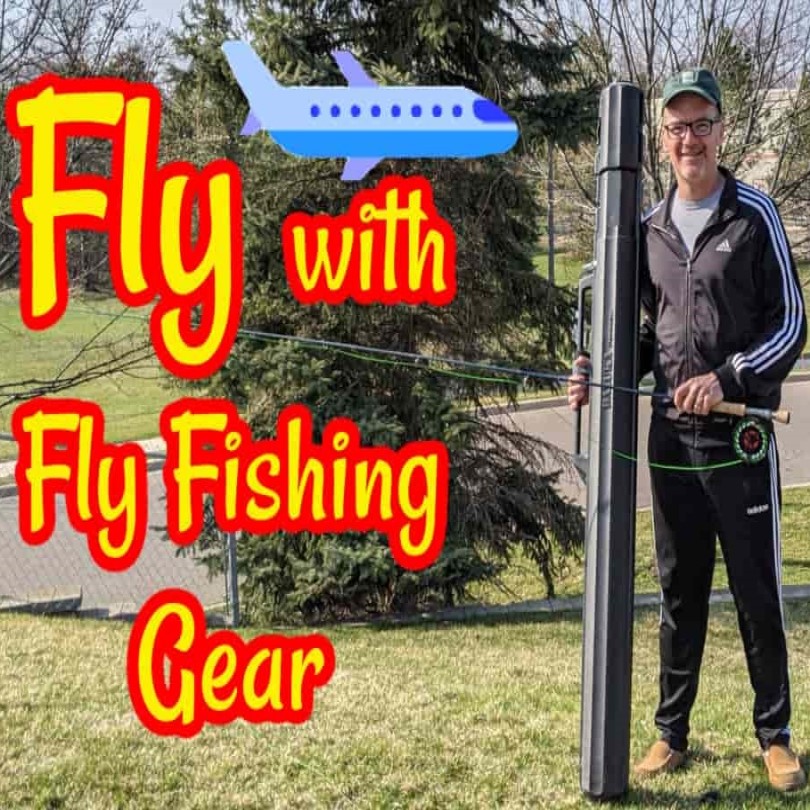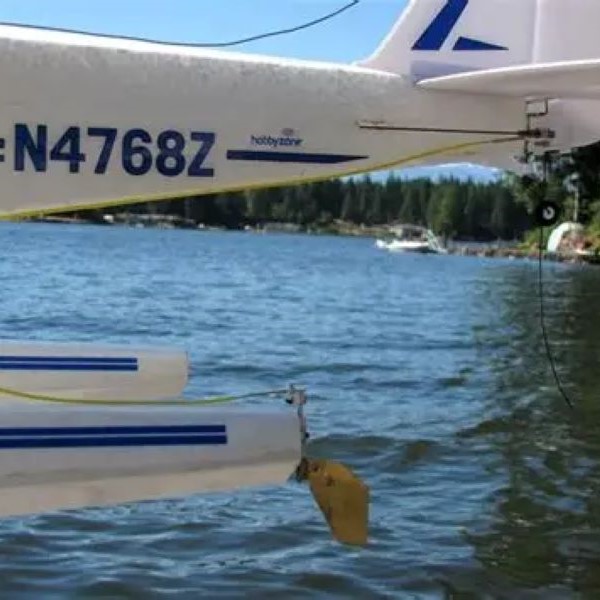Flying with fishing rods is a common challenge for anglers who love to travel. Whether you’re heading to Alaska for salmon or Belize for tarpon, your gear needs to arrive safely. Many travelers worry about breakage, airline rules, and packing methods.
Unfortunately, not all fishing rods survive the journey intact. However, with the right preparation, you can avoid damage and delays. Knowing how to pack, label, and communicate with airlines makes all the difference. This guide covers every detail of flying with fishing rods so your trip starts smoothly.
 Why Proper Packing Is Essential When Flying with Fishing Rods
Why Proper Packing Is Essential When Flying with Fishing Rods
Packing your fishing rod correctly prevents costly damage. Rods are fragile, especially at stress points like the tip. Rough handling by airport staff can bend or snap them.
Moreover, TSA inspections may open poorly secured cases. If parts shift during screening, they become vulnerable.
A well-packed rod also speeds up check-in. Clear labeling helps agents identify it as sports equipment. This reduces confusion and misplacement.
Some airlines charge extra for oversized items. A properly sized case avoids surprise fees. Measuring before you go saves time and money.
Rod tubes and hard cases protect against crushing force. Soft bags offer less resistance to pressure.
Additionally, packed reels need protection too. Tape the line guides and secure the reel seat.
Taking time to pack right ensures peace of mind. Your gear will be ready when you land.
Choosing the Right Case for Your Fishing Rod
The case you use determines how well your rod survives travel. Hard rod tubes are popular for their strength. They resist crushing from stacked luggage.
Look for models with internal dividers. These keep multiple rods from knocking together. Some even have padded spool holders for reels.
Duffle-style fishing bags work well for short trips. They combine rod storage with space for tackle. However, they offer less impact protection.
Telescopic rod cases suit shorter rods. They collapse for easy transport. Just make sure they lock securely when extended.
Check the diameter. Oversized tubes may not fit in overhead bins. Most airlines limit carry-ons to 22 x 14 x 9 inches.
Length matters too. Standard checked baggage allows up to 62 linear inches. Add length + width + height to stay within limits.
Some brands make airline-compliant cases. These meet size and durability standards.
Always reinforce weak points. Zipper pulls and corners wear out over time.
Pick a case that balances protection, portability, and airline rules.
Airline Guidelines for Traveling with Fishing Rods
Navigating the skies with fishing rods requires awareness of varying airline regulations.
Understanding TSA and Airline Carry-On Policies
TSA permits rods in carry-on and checked bags, but size limits apply. Check with airlines for carry-on dimensions.
Size and Quantity Restrictions Per Airline
Each airline sets its own size and quantity limits for fishing rods. Confirmation before flying avoids travel hassles.
 Essential Tips for Packing Fishing Rods
Essential Tips for Packing Fishing Rods
Packing fishing rods for air travel requires careful planning to prevent damage.
Selecting the Right Rod Case or Tube
Choose a rod case or tube that is both hardy and light for protection and ease of carrying. Ensure that the case fits within airline carry-on size limits to avoid check-in. Cylindrical, hard plastic cases often meet these requirements and offer good rod safety.
Tube diameters vary; obtain one that can hold all your rods snugly. Check for cases like the Sage Ballistic Rod Tube or Fishpond’s Jackalope Tube, known for their reliability. Remember to confirm case dimensions against your airline’s specifications to ensure a smooth journey.
Securing Rods for Travel – Internal Packing Techniques
Securing your rods internally is crucial to prevent damage during the flight. Wrap rods in soft material like bubble wrap to protect against impact. Use padding between rods if they are stored together to avoid scratches.
Tape can help keep multiple rods bundled safely, but be aware it may hinder quick access if needed. Investing in a rod tube with dividers can organize and cushion individual rods effectively. For additional safety, consider a TSA-approved lock to keep your rod case secure yet accessible for inspections.
Carry-On vs. Checked Luggage: Weighing Your Options
When flying with fishing rods, one must choose between carry-on and checked luggage. Each option has its own benefits and drawbacks that can affect your travel experience and gear condition.
Advantages and Disadvantages of Carry-On Rods
Carrying fishing rods on the plane has several benefits. First, it lessens the risk of losing your rods among checked luggage. You also have control over how your rods handle during the flight. However, carry-on rod tubes may need to meet strict size regulations. If they don’t fit overhead bins, you might have to check them in.
When to Check-In Your Fishing Rods
Checking in your fishing rods can be the better option when dealing with longer, one-piece rods or when carry-on space is limited. While checked luggage faces risks of rough handling, using sturdy, hard cases can protect your gear effectively. Checked rods also bypass size limitations for carry-on items, making it easier to bring all your equipment without worry.
Ensure your rods are packed securely within a strong, protective case. If available, use TSA-approved locks to allow for security checks without damage to locks or gear. Always review your airline’s policy for dimensions and fees to avoid surprises at the airport.
Airline-Specific Requirements and Fees
Traveling with fishing rods means knowing airline-specific rules.
Overview of Major Airlines’ Fishing Gear Policies
Airlines differ in handling fishing gear. Most allow rods in carry-on or checked bags. Yet, each has unique size limits. Confirm with airlines to avoid issues. Look up policies online before your trip. For example, Delta Airlines accepts carry-on rods if they fit their size box. Others, like United Airlines, might only take them as checked items. Always check each airline’s website for the latest information.
Oversize and overweight baggage can lead to extra fees. Avoid surprises by knowing your airline’s fee structure. If your rod case is long or heavy, expect to pay more. Fees range based on dimensions and weight. Southwest Airlines and American Airlines have specific charges for large items. Keep your equipment within size limits to minimize fees. Packing strategically can help you avoid extra costs. Use a lightweight but sturdy rod case to keep weight down. Remember, information can change. Always confirm with your airline before flying.
 Protecting Your Equipment: Cases and Locks
Protecting Your Equipment: Cases and Locks
When flying with fishing rods, protecting your gear is key. Here’s how to do it effectively.
The Importance of Sturdy, Protective Rod Containers
A strong rod case is crucial for safe travel. It shields your rods from damage and pressure. Pick a container that’s both tough and light for best results. Hard plastic cases often meet airline size restrictions, making them ideal. Make sure the case can fit all rods comfortably. It should also comply with your airline’s size rules.
TSA-Approved Locks for Security Checks
For added security, use TSA-approved locks on your rod containers. These locks allow TSA agents to check your gear without breaking the lock. This means your rods stay secure and your locks undamaged during inspections. Always mark your locks or cases for easy identification on the luggage carousel.
By choosing the right case and using approved locks, you can ensure your fishing rods arrive in top condition. This preparation will set you up for a stress-free start to your fishing adventure.
Managing Additional Fishing Equipment on Flights
When flying with fishing rods, you also need to manage other gear.
Packing Reels, Lines, and Lures
Packing reels, lines, and lures requires careful attention. Keep reels in secure cases to prevent damage. Carry lines in their original packaging or on the reel to avoid tangles. Pack lures in small boxes, and avoid sharp hooks in carry-on bags.
For carry-ons, detach reels from rods and secure them separately. Wrap lines neatly and place them with reels. For lures, use sturdy, compact boxes. Make sure sharp ends can’t poke through.
Handling Sharp Fishing Tools and Tackle
Sharp fishing tools must go in checked luggage. Wrap them well and use protective sheaths. For tackle like large hooks, ensure they’re securely covered. Use firm containers for these items. Check airline policies on sharp objects before packing.
Remember, security might confiscate sharp items if packed in carry-on. So, pack them in checked bags to be safe. Use padding material like foam or cloth around sharp points. Place tackle in hard cases to protect both the tools and your other luggage.
 Making the Most of Your Carry-On Bag
Making the Most of Your Carry-On Bag
When flying with fishing rods, consider your carry-on’s size and content wisely. Essential items should be on the top of your packing list. By prioritizing, you can ensure that even with luggage mishaps, you’re prepared for your fishing excursion.
Prioritizing Essential Fishing Gear for Carry-On
Prioritizing is key. Start with the basics for a day on the water:
- Fishing Rod: Select a travel-friendly rod, ideally one that breaks down to fit in a carry-on compliant tube.
- Reel: Pack your reel in a padded case. Place it in your carry-on to avoid damage.
- Fly Selection: Bring a small, versatile selection of flies. This allows you to fish even if the rest of your gear is delayed.
- Line and Leaders: Keep these with your reel and flies. Make sure they are well-organized to prevent tangles.
- Sunglasses: Protect your eyes and improve visibility on the water. Pack them in a hard case.
Remember, while TSA allows fishing rods, airlines may have different size limits. It’s smart to check with your airline before packing.
Backup Plans for Lost or Delayed Luggage
Always plan for the unexpected. Lost or delayed luggage can happen, so have a backup plan:
- Travel Insurance: Consider buying coverage that includes lost or delayed baggage.
- Emergency Kit: Pack an emergency gear kit in your carry-on, including essential items for at least one day of fishing.
- Contact Information: Keep airline and travel insurance contact details handy to report any issues quickly.
Pro tip: Always keep essentials like medication, important documents, and a change of clothes in your carry-on. This way, you’re covered for your basic needs no matter what happens with your checked luggage.
Flying with Fishing Rods: Final Considerations
Before embarking on your fishing trip, there are some final considerations to keep in mind. Ensure all preparations align with airline policies to avoid any travel issues with your fishing rods.
Pre-Trip Checklist for Anglers
Here’s a quick checklist to help you prepare:
- Confirm rod case meets airline size limits.
- Double-check TSA and specific airline carry-on policies.
- Pack rods using protective wraps and secure with tape or dividers.
- Choose TSA-approved locks for your rod case.
- Keep a backup selection of essential fishing gear in your carry-on.
- Verify travel insurance covers gear loss or delay.
- Ensure contact information for airlines and insurance is accessible.
Keeping these points in check will help you start your fishing adventure without fuss.
Addressing Common Concerns and FAQs
Anglers often have questions about flying with fishing rods. Here are some frequent ones:
- How do I protect my fishing rods on a plane?Use a sturdy case and secure locks. Pack rods snugly with padding.
- Can I bring my fishing rods as carry-on?Yes, if they meet size restrictions. Confirm with the airline first.
- What if my fishing gear gets lost by the airline?Have travel insurance and an essentials kit in your carry-on.
By addressing these common concerns, you can fly with confidence, knowing your fishing rods are well taken care of.
Frequently Asked Questions
Can I bring a fishing rod on a plane?
Yes. Most airlines allow it as checked baggage. Use a protective case.
Do I have to pay extra?
Not always. If within size and weight, it counts as a regular bag.
Can I carry it on?
Only if it fits in the overhead bin. Most rods are too long. Check with your airline.
Should I disassemble my rod?
It depends. Two-piece rods are easier to pack. Full-length ones need longer cases.
Are fly rods treated differently?
Sometimes. Their cases are often smaller. Treat them the same way for safety.
What if my rod gets lost?
File a claim immediately. Airlines may reimburse up to a set amount.
Can I pack fishing line in carry-on?
Yes. But keep it coiled and secured. Scissors must be in checked bags.
Is duct tape acceptable for securing reels?
Yes. It holds knobs in place. Remove it promptly to avoid residue.
 Final Thoughts
Final Thoughts
Flying with fishing rods doesn’t have to be stressful. With careful planning, the right case, and knowledge of airline rules, your gear will arrive safely.
Protect each component, label clearly, and communicate with staff. These steps minimize risk.
Whether you’re a weekend angler or a seasoned traveler, preparation is key. Enjoy your destination without worrying about damaged equipment.
In the end, flying with fishing rods is entirely manageable. Use this guide to make every trip successful and enjoyable.